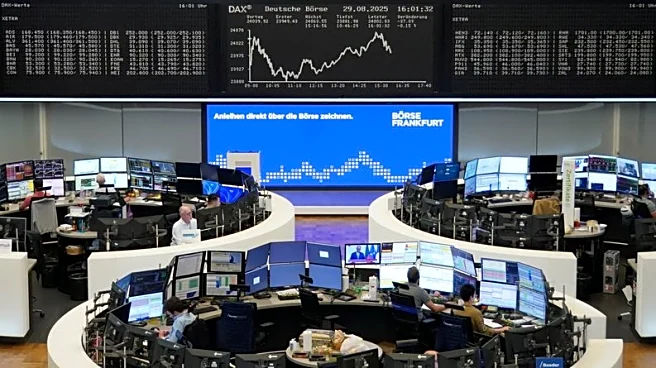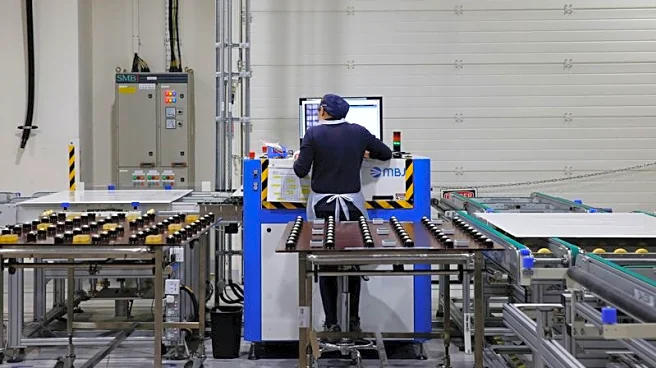What's Happening?
The Asian tech sector is experiencing contrasting trends in the third quarter of 2025, influenced by U.S. trade policies and Wall Street volatility. China's manufacturing sector has shown resilience, with a Purchasing Managers' Index (PMI) reading of 50.5 in August, indicating growth in new orders and manufacturing activity. This has led to strategic investments in high-value tech sectors such as semiconductors and AI infrastructure, with companies like Semiconductor Manufacturing International Corp (SMIC) and Cambricon Technologies seeing significant gains. Meanwhile, Hong Kong's tech stocks have demonstrated resilience, with the Hang Seng Tech Index experiencing gains, contrasting with declines in Japan and South Korea's tech sectors. The Nikkei 225 and Kospi Index have both faced downturns due to trade uncertainties and geopolitical risks.
Why It's Important?
The developments in Asia's tech sector have significant implications for global investors and economic stakeholders. China's PMI resilience suggests potential growth opportunities in high-tech sectors, attracting strategic investments. The divergence between Hong Kong's tech resilience and the declines in Japan and South Korea highlights the impact of macroeconomic factors and investor sentiment on regional markets. This situation underscores the importance of strategic allocation and regional diversification for investors. The anticipated U.S. Federal Reserve rate cut in September could further influence capital flows, potentially benefiting Asia's high-growth tech stocks. These dynamics are crucial for understanding the shifting landscape of global tech investments and the broader economic implications.
What's Next?
Investors are likely to focus on PMI-driven sector rotation strategies, allocating capital to sectors with strong PMI signals, such as semiconductors and AI infrastructure in China. There may also be a shift towards regional diversification, with an emphasis on Hong Kong's resilient tech sub-sectors while being cautious about overexposure to Japan and South Korea's more vulnerable tech firms. The upcoming U.S. Federal Reserve rate decision could further impact market dynamics, potentially leading to increased inflows into Asia's tech sector. Stakeholders will need to closely monitor these developments to navigate the complex and fragmented investment landscape effectively.














